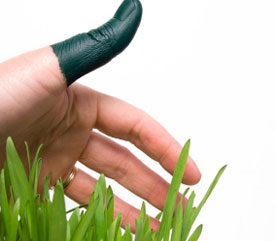Improve the Look of Your Backyard Landscape with these 3 Easy Lawn Repair Tips
Most lawns suffer damage at some time or other. Paths that are worn into them, molehills and compacted soil are the kinds of problem that often occur. With a few simple tricks you can soon have your lawn back in great shape.

1. Turning Bare Spots Green Again
Areas of the lawn that are heavily used soon become flattened or even develop into bald patches, spoiling the overall look. Bare patches can be re-sown quickly with a little lawn seed.
If possible, use the same seed mixture with which the original lawn was sown, or a special lawn-repair seed mix.
Prepare the area by loosening the soil with a rake, garden fork or cultivator, and scattering a mixture of soil and sand on top, if necessary, to even out any bumps. Sow seed by hand, pressing it in firmly with your feet or using a board, and scatter a very thin layer of soil or compost on top, just to cover the seed lightly. Water with a light sprinkler and do not allow the area to dry out. The new grass should have begun to take hold after about a fortnight.
2. Using Turf is Quicker
If the areas that need to be replaced are fairly small, up to about a quarter of a square metre, it’s quicker to cut out and remove the damaged area and fit a section of healthy turf in its place. You can buy new turf for this or take it from another part of the lawn.
Cut out and remove a sufficiently large section of healthy turf with a spade. Loosen the soil of the damaged patch slightly and add a little fertiliser. You will probably have to cover the area with some soil in order to ensure a level surface. Fit the piece of healthy turf in position and press it down firmly with a board to ensure it knits well with the subsoil. Lawn edges can also easily be repaired in the same way.
3. Coping with Water-Logging
If the soil is so compacted in places that water collects in puddles after it rains, the roots won’t be able to breathe and the grass will turn yellow over time and eventually die. Piercing the lawn with a garden fork or an aerator not only ensures that air can penetrate the soil, it also enables rainwater to drain into it. Fill the holes afterwards with sand, so that they remain permeable.
If the problem is serious, you may need to install a drainage system or soakaway, but this is a job for a professional.



